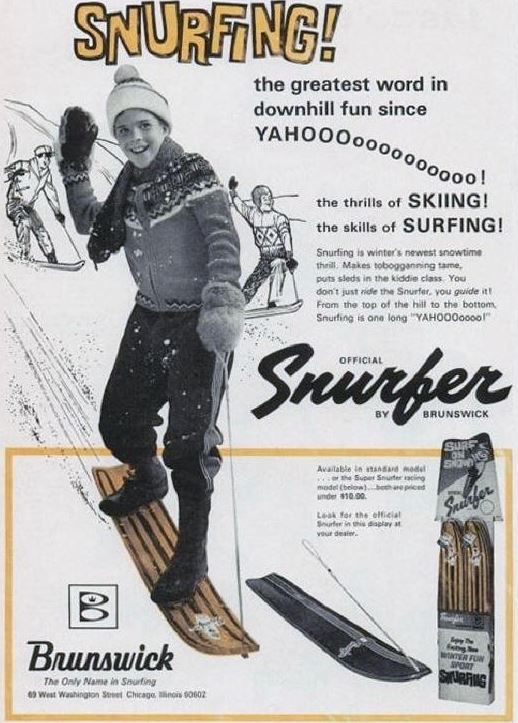Ultimate Guide: History of Snowboarding
Snowboarding is a winter sport where the rider descends a snow-covered slope while standing on a board that is attached to their feet with special boots and bindings. The development of snowboarding was inspired by skateboarding, sledding, surfing and skiing.

Snowboarding has been around since the 1920s, when boys and men would tie plywood or wooden planks from barrels to their feet using clotheslines and horse reins in order to steer themselves down hills. Modern snowboarding began in 1965 when Sherman Poppen, an engineer in Muskegon, Michigan, invented a toy for his daughter by fastening two skis together and attaching a rope to one end so she would have some control as she stood on the board and glided downhill. The ‘Snurfer’ went into commercial production and in 10 years more than a million unit were sold for $15 each.
The 70’s was a time of growth as the first snowboard company ‘Winterstick’ headed by surfer Dimitrije Milovich, was formed. He created 2 shapes, the ’round tail’ and the ‘swallow tail’ in his garage and sold 1500 units before the snow industry became disinterested.
Enter 23 year old Jake Burton Carpenter. You may recognise that name from one of the biggest modern day snowboarding brands. He began tinkering with the flex of his Snurfer and adding straps and fins for stability. Around the same time, former skateboarder Tom Sims, began doing the same. As the sport began to get more popular, the Snurfer became outdated as Burton and Sims innovated their boards by creating new shapes known as snowboards today. If you head instore, you’ll find older style Burton snowboards on display.
During the 80’s, snowboarders were banned from lifts and public runs in most resorts. They were forced to walk up the hills and ride through backcountry at night or on closed runs to avoid detection from Ski Patrol. Check out this video from 1985 about the rivalry between skiers and snowboards, it cracks us up every time we see it. Despite this, snowboarding competitions began to surface with a focus on a combination of racing (similar to skiing) and freestyle (like skateboarding).
The snowboarding boom came in the early 90’s when the first highback bindings came to market, pioneered by Flite. This stemmed innovation for new board shapes (twin, asym, round tails), styles (powder, racing, freestyle, carving), bindings (plated) and boots. Through the development of new technologies, young people began choosing snowboarding over skiing when starting out at the snow. It became so popular that after 4 years of being recognised as a sport, snowboarding debuted in Japan for the 1998 Winter Olympics.

Snowboarding maintained popularity into the 2000’s as new Olympic events were introduced and more snowboard brands emerged. Each brand has established their own technology, shapes and styles of snowboards for every type of rider. Even today, Burton is innovating snowboarding with their introduction of step in bindings, which is gaining popularity.
The latest snowboard to emerge gets back to the roots of the sport and gained traction because of Covid-19. Around this time, most resorts around the world were shut down to prevent the spread of disease, so the only way to get out on the snow was split boarding. ‘Split Boards’ are designed to be used as back country skis to climb the slopes, then clip together to form a snowboard to ride down. Though this style hasn’t become widely popular now that resorts are open, it’s a type of snowboarding that is worth the experience.
It’s been about 50 years since snowboards came to life and Boss Man Andrew has just realised he’s been snowboarding for 30…
